An in-depth analysis of China’s new Chengdu J-20 stealth fighter, which made its first flight on 11 January, and why it may not only represent a threat to Western fighter pilots, but also to the Russian aerospace industry.
Stealth fighters, it seems, are like London buses – you wait patiently for ages for one to turn up (F-35) and then two (PAK-FA and J-20/J-XX) turn up (almost) at the same time. Pictures, blurred at first, of the J-20 undergoing ground tests, soon gave way to clearer and sharper pics, as well as video of the aircraft’s maiden flight on 11 January. One wonders whether the security guards had orders to confiscate cameras and issue the spotters with better quality camera lens.
Across the Internet, the first flight of the J-20 has caused a predictable division into opposing camps. On one side, by hysterical worriers, the aircraft was described as a ‘terrifying challenge’ that would eat F-22 Raptors for breakfast, and gorge on baby F-35s as light snacks. Meanwhile those on the opposite side dismissed it as a one-off publicity stunt by a country that only knows how to copy stuff and is at least 25 years old. A similar ‘not-invented here’ attitude that cost US pilots their lives some 70 years ago when the Zero was first encountered.
The truth, as ever, is we don’t know. While the shaping of the aircraft aims torwards stealth (although the canard dihedral suggests the designers have sacrified some LO for agility) and its has a mean paint job, the real questions Western (and other) intelligence analysts will be focusing on are the engines, radar and sensor fusion.
Though undoubtedly the electronics and IT industry have taken leaps and bounds since the F-22 was developed (many smart phones now boast a 1Ghz processor and a dual core phone is just about to hit the market) the key is in sensor fusion and in integration. As the US is finding out to its cost with F-35, software is the trickiest part to get right. Though pictures that have surfaced on the Internet show a snazzy cockpit straight out of Battlestar Galactica, it is unclear whether the flying J-20 has this, or whether this is future concept. What can be gleaned from the pictures is the fighter sports a wide-angle holographic HUD.
Engines, too, are as of the moment an unknown. Previously reliant on Russia for engines any, development in powerplants would signify a greater leap forward than the pure airframe and some analysts have suggested a new Chinese engine, the Shenyang WS 15 may power the J-20. However, notably the J-20 also uses a divertless supersonic intake (DSI) and is only the third aircraft to sport this feature after the F-35 and JF-17, suggesting that Chinese experience with this technology has been successful so far and it has brought benefits.
Radar, too, is currently an unknown although China’s extensive espionage efforts also may mean that an AESA radar may be further along the line than previously thought. It has already built up experience with phased-array radars in its AWACS projects.
However, in armament China is now making great strides in guided weapons of all types. Its AMRAAM-type AAM, the PL-12, reportedly outranges the original US weapon. A short-range dogfight missile, the PL-ASR has been described as ‘very scary’ by one western missile expert. Meanwhile China is reported to be working on a long-range ramjet powered missile – the PL-13 comparable to Europe’s MBDA Meteor which, if introduced today, would outrange anything in the (white) US inventory. In short, Western missile experts in private are noticeably rattled by this progress and maintain that any gap in quality between western and Chinese air-to-air weaponry is fast closing.
However, questions still remain. Looking at it through the western prism of how aircraft programmes are developed may not be especially helpful in this case. Is it a one-off, a technology demonstrator, a first prototype or what?
For examples of dead-end projects, one can look at previous Russian fighters – the Sukhoi Su-47 Berkut (a forward-swept wing testbed) and MiG 1.44 – both of which, despite causing a stir in the West, (and are still featured in aerial combat video games as ‘boss’ enemies due their sexiness) – never made it to frontline service. However, despite this uncertainty there are two main conclusions to be drawn and a third possibility that so far has mostly been missed by analysts.
A real flying demonstrator
The first is that the maiden flight of the J-20 means that China is now only the third nation in the world, after the US and Russia, to develop and test-fly a full-size stealth combat aircraft demonstrator. This in itself elevates Chinese aerospace capability and makes it one to watch even more closely in the future. While other countries such as the UK (BAE Systems Replica) West Germany (MBB Lampyridae) and Japan (Mitsubishi ATD-X) have all created full-size stealth aircraft mock-ups – the J-20 – unless it is an epic deception plan (complete with CGI crowds cheering outside the airfield wire) is a real flying article. Lessons learnt here, even if this is a one-off, will certainly feed into future designs and development.
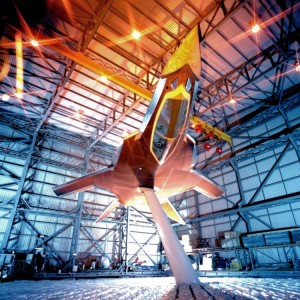
BAE Replica - effectively the UK's entry chip to JSF saying 'we can do stealth ourselves' (BAE Systems)
Strategic surprise
The second is that this has come as a strategic surprise to the West and especially the US. While the existence of a Chinese stealth fighter programme was known (complete with regular CGI renders from the online Photoshop crowd), the prevailing opinion was that it was much further away in the future than is now known. It may be, in fact, that the programme has been accelerated since it has come so fast on the heels of the PAK-FA. So, this will cause the US and allies to reassess timescales for Chinese projects. If it is a prototype for an operational type to be fielded, it may be in service more quickly than people think. The timing, too, (though it may have been a pure accident) of the country’s first stealth fighter flying just as the US Secretary of Defense visits only serves to rub salt into the wound ‘See – we’re catching you up’. In history, amplified by the Cold War, this type of strategic surprise (Sputnik, bomber gaps, Foxbat, ultra-agile dogfight AAMs) has been the spur for US defence R&D. Will this be the case now?
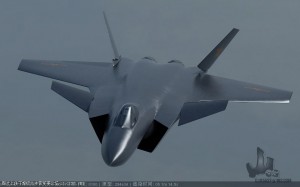
Now that a real aircraft has replaced CGI renders - what will the West's response be? (Chinese Internet)
Stealth on the export market
Finally, and a major point that many have missed, is that this potentially sets up a very interesting future export battle in fifth-generation stealth fighters between China and Russia. Previously for affordable combat aircraft, second tier airforces (and non-US allies) have had more or less one choice – Moscow for MiG-29 and Su-30 fighters.
The emergence of the PAK-FA no doubt last year whetted appetites for a lower cost stealth fighter among those countries for whom F-35 is either (a) too expensive or (b) not available. India has already taken the plunge in this direction despite multiple other ongoing fighter projects (MRCA, Tejas, MiG-29K).
However, in China, export of defence equipment and fighters is now becoming an industrial goal. The JF-17/FC-1 for example is being aimed at the MiG-21 replacement market and with a sticker price of less than $25m is highly attractive to third world airforces with whom China has influence.
So the emergence of the J-20, perhaps now on a similar development timescale is an exciting prospect for second tier air forces around the world – after years of dreaming about stealth capability – they may have two aircraft to choose from, with China and Russia competing aggressively for their business.
As Professor Keith Hayward, Head of Research, Royal Aeronautical Society, notes in an upcoming analysis of the Chinese aerospace industry for the February issue of Aerospace International magazine: “China’s wider commercial relationships with developing world states are also providing useful leverage in forging deals.” China, then wants to move from just producing aircraft for its own domestic consumption, and a red-hot product like the J-20 could help it achieve this, far more than any slightly overweight A320 lookalike like the C919. Furthermore, with ‘Western-equivalent’ Chinese AAMs missiles to ‘bundle’ it with, any nation buying a J-20 would get an extremely capable weapon system - that will be ‘good enough’ for the majority of air forces and cheap enough to buy in siginficant numbers.
Boeing’s Jim Albaugh too, has noted Chinese export ambitions for its civil and military products: “I think from an export standpoint, we will be increasingly challenged as an aerospace industry because the Chinese are going to be players too.”
This then is the real threat assessment for US and western air forces – the fact that potential adversaries all across the world may be fielding low-observable aircraft in the not too distant future. Having two sources for a low-observable fighter (even if they are still behind in capability with the F-22/F-35) will make it much more difficult for the US to restrict their sales to unfriendly nations.
The stealth genie then, is well out of the bottle. Where Western fighter pilots once woke up in cold sweats over the Fulcrum and Flanker, the PAK-FA and J-20 represent another key qualitative edge being eroded.
The real competitor for the J-20, then, is perhaps not the F-22, but at least in the marketplace the PAK-FA…
from the Royal Aeronautical Society



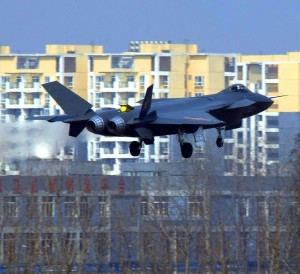
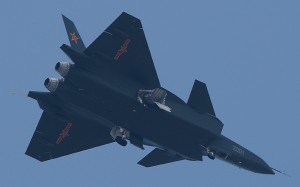
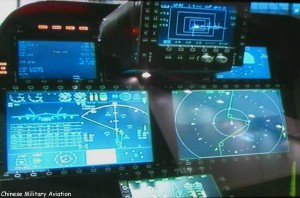
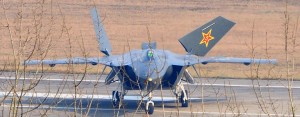
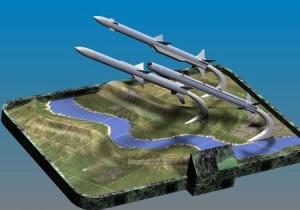
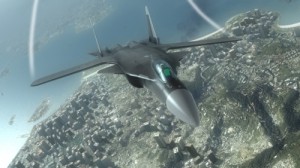
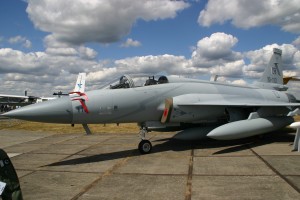
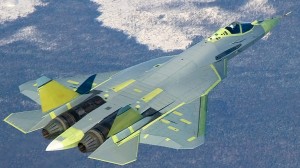




Good stuff Tim. All very sensible.
Thanks John! It will certainly be a fascinating aerospace project to track in the future.
Any chance of seeing the J20 demonstrated at the next Farnborough Air Show?
All very salient points. I’m reminded of the Foxbat experience - at first it was seen as this superfighter that was used to drive the FX program that resulted in the F-15. Once Belenko came over, it couldn’t be cast as a strict F-15 counterpart anymore, but the Soviets had never intended it to be so. It then became easy to mock the design as an unmaneuverable “stainless steel monstrosity” with vacuum tube avionics. But it did the job it was designed for - the only Iraqi air to air victory from Desert Storm was by a Foxbat.
Assuming an aircraft is meant to accomplish the same thing as the nearest Western equivalent is foolish, as is assuming that just because China is late to the stealth game that the J-20 will somehow not be effective for whatever role the Chinese intend for it.
I understand the US arrested a spy that gave away a lot of Stealth tech to the Chinese. Nice move US on keeping secrets,secret.